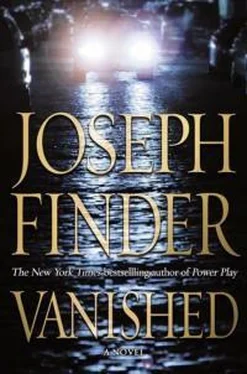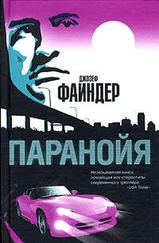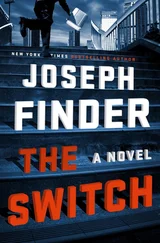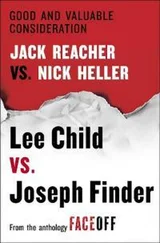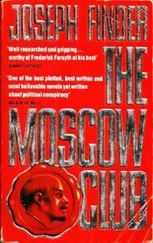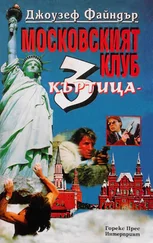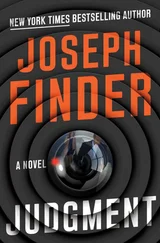He looked at me in surprise. “You’ve read The Dark Knight Returns ?”
“Nah. Saw the movies. But when I was a kid, Batman was this really cool superhero. He was the Caped Crusader. He was millionaire Bruce Wayne, and he had the Batmobile and the Bat Cave, and he was always saving Gotham City from the Joker or the Riddler. He always won . The bad guys always ended up behind bars.”
“You’re talking about the TV show.”
“Point is, real-life justice is a little more complicated. More like the dark and brooding Batman, you could say.”
“Yeah, well, you’re totally wrong. Batman was originally this, like, tragic figure. Bruce Wayne’s parents are killed in a holdup, and he makes this solemn promise on their grave to rid the city of crime.”
“Okay, okay,” I said. I should have known better than to talk comic books with Gabe. “What I’m trying to tell you is, the right thing isn’t always the easy thing.”
“Do I get a cookie with that fortune?”
“You might want to watch the way you talk to your elders,” I said sternly.
“Yeah, right,” he said, and he smiled, and I smiled, too.
This was getting way too heavy for me, so I changed the subject and asked him about his summer plans, but he didn’t really have any, except for finishing his graphic novel. We circled back to their driveway and stood in front of my Defender.
I’d paid one of Granger’s guys to recover it from the Georgia woods and drive it back to D.C. The guy had had the car washed and polished, and it gleamed. Of course, that just made the long white scratch on the driver’s side stand out more against the glossy Coniston green.
“What happened here?” Gabe said, tracing the mark with his finger.
“Some jerk keyed it.”
“That’s a bummer.”
I shrugged. “Not my biggest concern right now.”
He looked uncomfortable for a few seconds, as if he wanted to bring something up.
“What?” I said.
“So how come you’re moving out?”
“I have my own apartment.”
“I mean, out of Washington. I heard you talking to Mom.”
“I haven’t decided what I’m doing. I might move back to Boston.”
“So, what, that’s it? You’re just going to move, and I’ll, like, never see you again?”
“You’ll see me plenty, you poor guy. More than before, probably.”
He smiled again. He had a terrific, totally winning smile when he actually used it. His mom’s smile. “You can run, but you can’t hide, Nick.”
“Don’t worry about it,” I said. “You can’t get rid of me that easy.”
I’m immensely grateful to a few people who’ve given generously of their time to make me look so much smarter than I really am. Most of all: Lieutenant Robert “Buzz” Glover of the Washington, D.C., Metropolitan Police Department’s Special Operations Division, whose assistance with the specifics of crime and law enforcement in the D.C. area was invaluable; and two extremely savvy international private investigators who helped make Nick Heller real: my old friend Harry “Skip” Brandon, of Smith Brandon, and Terry Lenzner, of the Investigative Group.
Once again, Dick Rogers – the FBI legend who led the Hostage Rescue Team – was terrific in helping choreograph some of the most intricate action scenes and keep them plausible, along with Nick’s martial-arts trainer, Jack Hoban.
Kevin Murray, a specialist in eavesdropping – detection, audits, and counterespionage consulting, gave me extensive information about what’s actually possible in the realm of surveillance technology, which was even more than I’d imagined. Bill Spellings briefed me about the business of TSCM (technical surveillance countermeasures) and how it works in real life, and Mark Spencer of First Advantage Litigation Consulting made the complex technology of computer forensics and data recovery not only understandable but very cool, as did Simson Garfinkel (who helped come up with the “RaptorCard”).
Thanks to my security experts, including Jeff Dingle and Roland Cloutier, director of Global Security for the EMC Corporation, who devised some creative mobile phone ruses. Dave Wade advised me on the tracing of cell phones, and Jerry Richards helped me understand the intricacies of surveillance cameras and their possible manipulation. My longtime source on explosives technology, the remarkable Jack McGeorge, was there for me again. I was advised as well by Christopher Morgan-Jones, formerly of Kroll; and Gene Smith, of Smith Brandon.
I’m particularly indebted to my friends at ASTAR Air Cargo, who came through for me when I needed access to a cargo flight (and some hard-to-find details) for Nick’s opening scene. Thanks to Travis Hall, Martin Godley, Rob Miller, Ron Long, Tom Halpin, Dominick Deleto, Jason Stupp, and CFO Steven Rossum.
Pam Buote – assistant to the CEO of the EMC Corporation, Joe Tucci – told me about the life of an executive admin to a CEO (and understood that I needed to take some liberties for plot reasons). My good friend Bill Teuber, the vice chairman of EMC, helped in all sorts of ways once again. Paul Dacier, EMC’s general counsel, guided me through a number of legal complexities, as did Jay Shapiro of Katten Muchin Rosenman and Eric Klein of Sheppard Mullin Richter & Hampton. For safecracking tips, my thanks to Ken Doyle of Advanced Safe and Vault Engineering in Novato, California.
On offshore banking and shell companies, I was advised by Dennis Lormel of Corporate Risk International, Philip R. West of Steptoe & Johnson, Don Meiers of Miles & Stockbridge, and the encyclopedic Jack Blum of Baker Hostetler. Steve Aftergood of the Federation of American Scientists and Steve Kosiak of the Center for Strategic and Budgetary Assessments helped me understand the Pentagon’s “black budget.” Michael Wilson of Integrity Partners guided me through forensic accounting, and Edward Hasbrouck had some useful suggestions on passports and forgery (all theoretical, of course).
My medical consultants included David Adelson, M.D., and my brother, Dr. Jonathan Finder. On a flight out of L.A. one day I happened to sit next to a private pilot named Ody Pond, who gave me some great plot ideas.
I’m a Boston guy, but this was a Washington, D.C., book, so I spent a lot of time walking the streets, taking notes. When inevitably I needed follow-up details, I was quite fortunate to get some great research assistance from both Amy Petersen and Will Dickinson, who meticulously retraced Nick’s steps, took loads of photos, and dug up all sorts of obscure tidbits for me. Tiffany Kim helped with additional research.
My consultants on Gabe, none of whom are in fact “emo” or troubled or alienated, so far as I know, included John Thomsen, Austin Lang, Ben Moss, and Emma Finder.
For advice on comics and graphic novels, thanks to Will Dennis of DC Comics and Brian Azzarello.
As always, Giles McNamee of McNamee Lawrence was my unindicted co-conspirator in devising corporate scams with a mystery writer’s sensibility. Even more important, he lent me his Coniston Green Land Rover Defender long enough for me to decide that Nick had to drive one too.
At St. Martin’s Press, my U.S. publisher, my deepest thanks to John Sargent, Sally Richardson, Matthew Shear, George Witte, Matthew Baldacci, Lisa Senz, Nancy Trypuc, John Murphy (fellow olive loaf connoisseur), Ann Day, Ami Greko, Jeff Capshew, Brian Heller, Tom Siino, Martin Quinn, Ken Holland, Jerry Todd, and Kathleen Conn. At Audio Renaissance: Mary Beth Roche, Laura Wilson, Jeanne-Marie Hudson, and Kristin Lang.
At Headline, my UK publisher, I thank my wonderful editor (and champion), Vicki Mellor; Alice Shepherd, Siobhan Hooper, and everyone in Sales and Marketing. Thanks as well to my redoubtable UK agent, Clare Alexander of Aitken Alexander, and my foreign rights agent, Danny Baror.
Читать дальше
